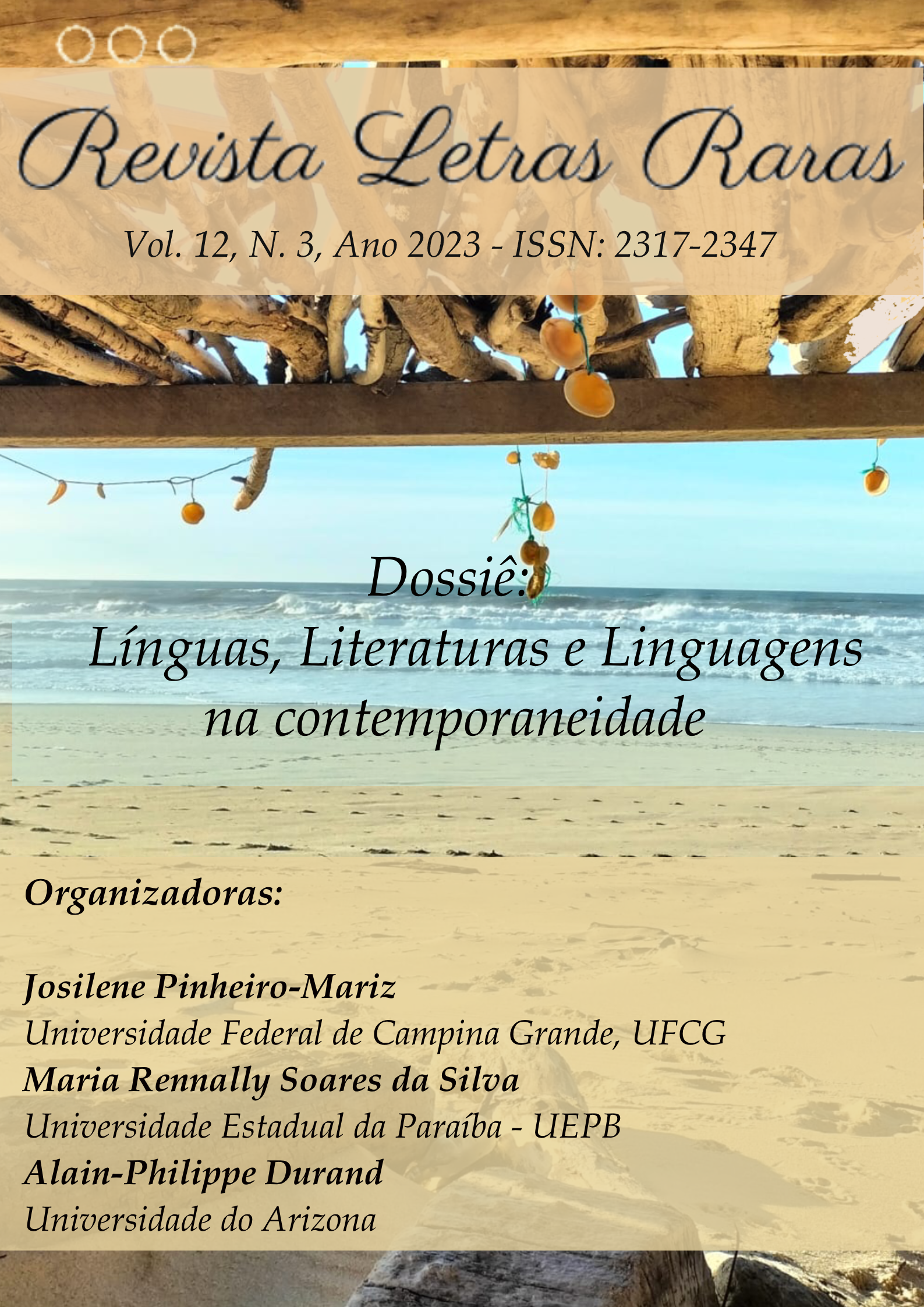Carnavalization in the film adaptation Alice in Wonderland by Tim Burton
DOI:
https://doi.org/10.5281/zenodo.10439442Palavras-chave:
Film adaptation, Alice in Wonderland, CarnavalizationResumo
The narrative Alice in Wonderland was adapted for cinema at different times in the 20th and 21st centuries, by different directors. One of the most recent intersemiotic translations on this plot took place in 2010, carried out by Tim Burton, in which it is possible to visualize carnivalesque features in the film produced. Carnivalization is the event in which the popular stratum of society has the opportunity to also participate in privileged social processes, traditionally carried out by a class holding power, such as kings, queens, popes, princes, etc. Carnival events occur through an inversion of social roles, or poles, resulting in laughter or mockery. In view of this, in this work, the film adaptation of Alice in Wonderland, by the aforementioned director, is analyzed in order to understand carnivalization in Bakhtinian terms, developed in the work. To this end, the works of Bakhtin (2005 and 2008) on Carnivalization and Discini (2006) were used as the main theoretical contribution. Five scenes from the highlighted film were analyzed, in order to understand how carnivalization happens in the cinematic narrative, its characteristics and consequences. We highlight, in fact, the presence of carnival in Tim Burton's work, in which the scenes analyzed make the work more of a carnivalesque production.
Downloads
Referências
BAKHTIN, M. Problemas da Poética de Dostoievski. Rio de Janeiro: Forense Universitária, 2005.
_________. A cultura popular na Idade Média e no Renascimento: o contexto de François Rabelais. São Paulo/Brasília: HUCITEC, 2008.
BURGESS, Anthony. A Literatura Inglesa. 2. ed. Trad. Duda Machado. São Paulo: Ática, 2002.
DISCINI, N. Carnavalização. In: BRAIT, B. (Org.) Bakhtin: outros conceitos-chaves. São Paulo: Contexto, 2006.
EAGLETON, Terry. Marxismo e crítica literária. São Paulo: Editora Unesp, 2011.
JAMESON, Fredric. Pós-modernidade e sociedade de consumo. Novos Estudos Cebrap, n.12. p. 16-26, jun.1985.
LOPES, Edward. Discurso Literário e dialogismo em Bakhtin. In: BARROS, D. L. P. de; FIO-RIN, José Luiz (Orgs.). Dialogismo, polifonia, intertextualidade: em torno de Bakhtin. São Pau-lo: Edusp, 2003, p. 63-81.
MEDEIROS, Marcos de. Paródia/carnavalização e função poética em a invenção do Brasil. Intexto, Porto Alegre: UFRGS, v. 2, n. 13, p. 1-14, julho/dezembro 2005.
MIRANDA, Dilmar. Carnavalização e multidentidade cultural: antropofagia e tropicalismo. Tempo Social; Rev. Sociol. USP, S. Paulo, 9 (2): 125-154, 1997.
SACRAMENTO, Igor. Nos tempos de Dias Gomes: a trajetória de um intelectual comunista nas tramas comunicacionais. 2012. 511p. (Tese) Doutorado em Comunicação e Cultura – Escola de Comunicação, Universidade Federal do Rio de Janeiro.
SANTOS OLIVEIRA, Ana Maria Abrahão dos. Machado de Assis: uma releitura à luz da teoria da carnavalização, de bakhtin. REEL – Revista Eletrônica de Estudos Literários, Vitória, s. 1, a. 5, n. 5, 2009.
SILVA, Marisa Corrêa. Crítica Sociológica. In: BONNICI, Thomas; ZOLIN, Lúcia Osana. (orgs) Teoria Literária: Abordagens Históricas e Tendências Contemporâneas. Maringá: Eduem, 2003.
Filmography
ALICE in Wonderland. Direction by Tim Burton. Walt Disney Pictures. USA: 2010. Califórnia: Walt Disney Studios Motion Pictures, 2010. DVD. (1h 48 min.), color.
Downloads
Publicado
Como Citar
Edição
Seção
Licença
Copyright (c) 2023 Revista Letras Raras

Este trabalho está licenciado sob uma licença Creative Commons Attribution-NonCommercial 4.0 International License.







